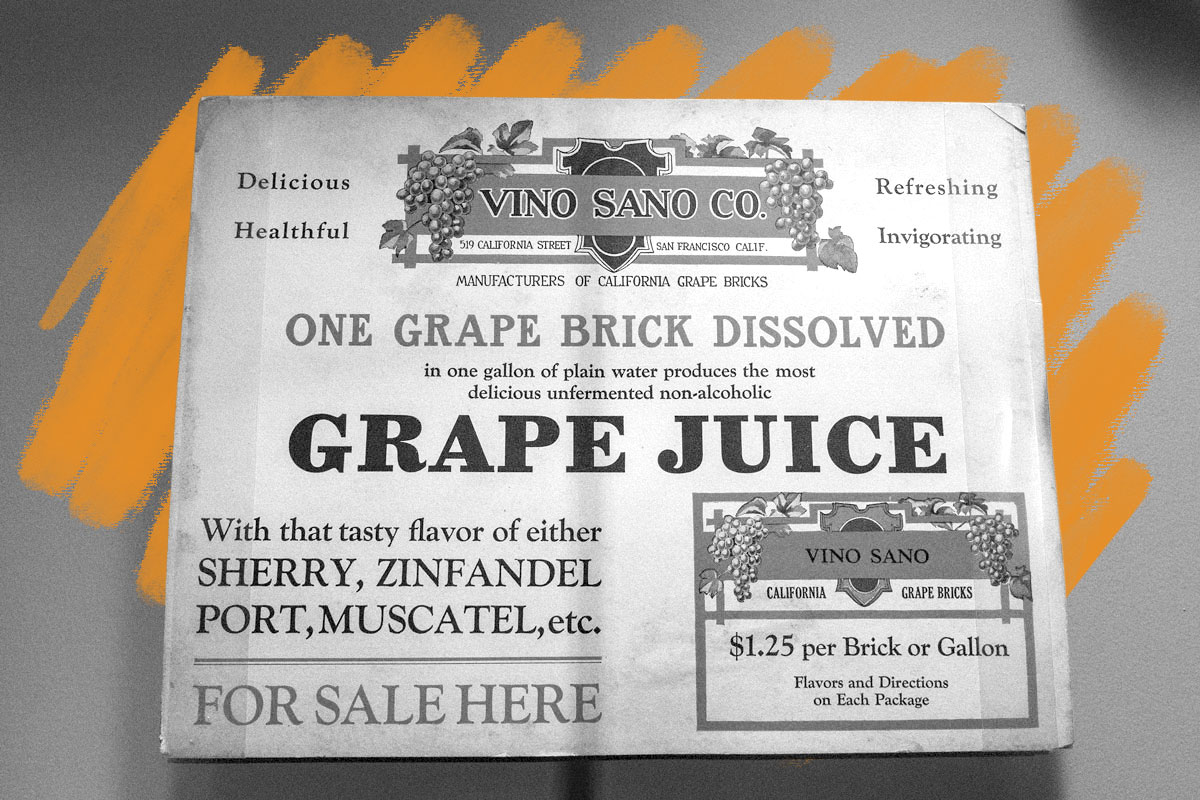During Prohibition, grape juice had “warnings” describing how to ferment it into wine.
To say that Prohibition didn’t put an end to the “manufacture, sale, or transportation of intoxicating liquors” would be putting it lightly. Before the 18th Amendment was finally repealed by the 21st Amendment, the Volstead Act was the law of the land and bootlegging could land you in serious trouble. Yet many people took creative approaches to skirting that law, including vintners. Some winemakers used concentrated grape juice to make “wine bricks” that they were quick to clarify should definitely not be used for alcoholic consumption. To drive this point home, some such juices even came with “warnings.”
“Do not place the liquid in this jug and put it away in the cupboard for twenty-one days,” read one particularly unsubtle store sign, “because then it would turn into wine.” The packaging of a brand called Vino Sano advised consumers to “avoid the use of any kind of yeast, raisins, etc., otherwise fermentation sets in.” The many upstanding citizens who purchased wine bricks surely heeded that warning and enjoyed their alcohol-free grape beverage. On the other hand, because it wasn’t technically illegal to drink during Prohibition — only to manufacture, sell, or transport liquor — anyone who purchased grape juice and accidentally left it in a jug for three weeks could imbibe the resulting concoction without fear.







